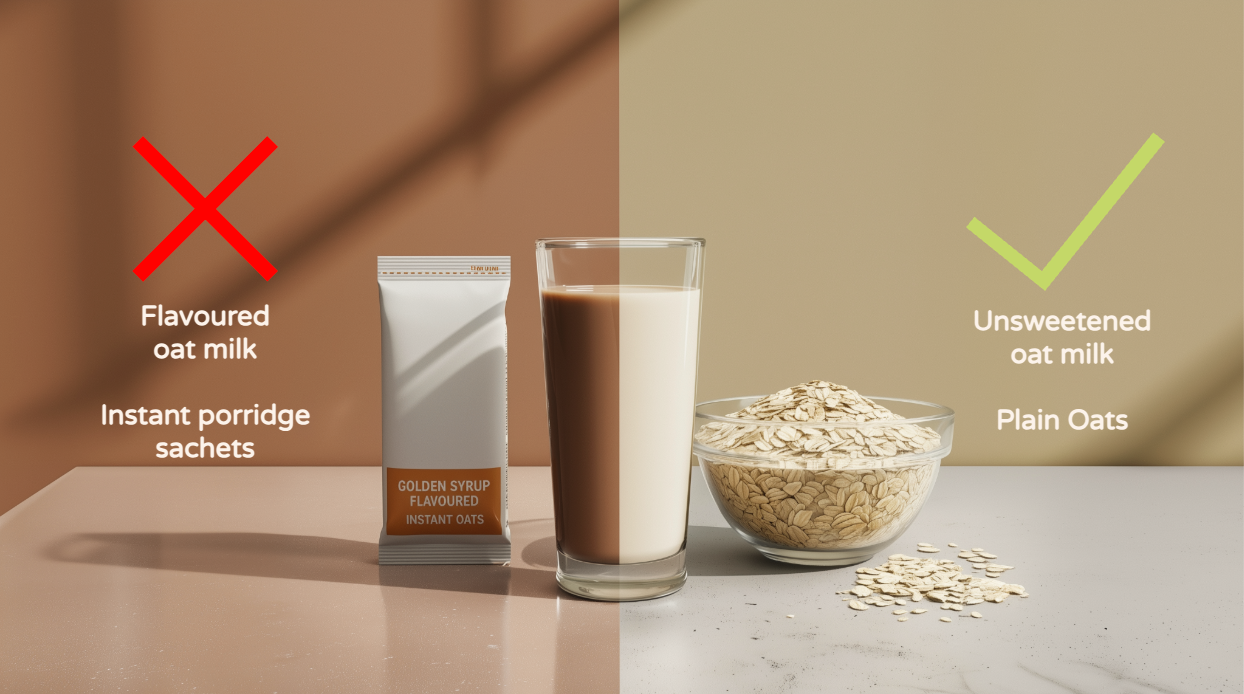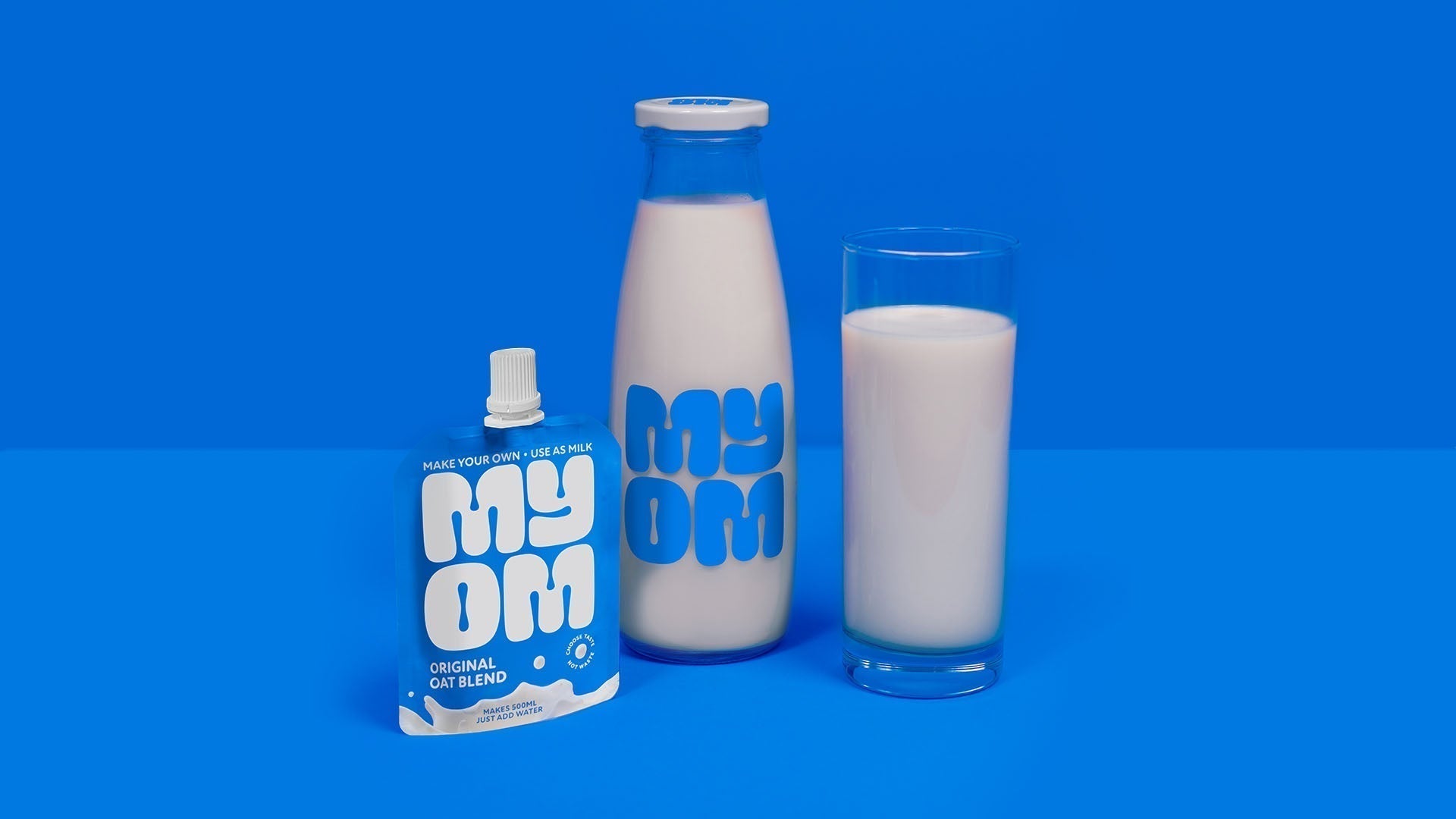If you’ve seen headlines shouting that porridge or oat milk is about to be banned as junk food, you’d be forgiven for thinking the world’s gone mad! It sounds absurd, right? Oats are one of the healthiest grains on Earth – packed with fibre, vitamins and slow-release energy. So why are they being lumped in with fizzy drinks and crisps? Let’s unpack the confusion, what the new UK legislation actually says, and why MYOM oat milk is completely unaffected.
What the UK Junk Food Ad Ban Actually Says
From January 2026, the UK government will enforce new advertising rules under the Health and Care Act 2022. The idea is simple: reduce exposure to foods high in fat, salt or sugar (known as HFSS). To do this, the government uses something called the Nutrient Profiling Model (NPM), created by the Food Standards Agency. In plain English, every food and drink gets a ‘score’. Foods that score 4 points or more, and drinks that score 1 point or more, are restricted from TV ads before 9pm and from paid-for online ads.
How the HFSS model scores foods and drinks
The scoring system works like a traffic light. Products get points for energy, sugar, saturated fat and sodium, but can ‘win back’ points for fibre, protein, fruit, veg, and nuts. It was designed to catch obvious junk foods – think chocolate bars, crisps, and fizzy drinks – but some surprising products get caught in the net.
Why Oats Got Caught in the Crossfire
Plain oats, like the ones you use for traditional porridge, are completely exempt. But flavoured instant porridges – the golden syrup or chocolate sachets with added sugar and salt – often score too high. This leads to confused headlines suggesting that oats in general are unhealthy, when in reality it’s the added sugar that tips the balance. Watch out for flavoured overnight oats, they can often have a very high sugar content.
Why this matters to your morning porridge
Imagine this: you buy plain oats and make them with MYOM oat milk. Nutritious, wholesome, and naturally low in sugar. Now compare that to a flavoured porridge sachet, often with many teaspoons of added sugar. Same base ingredient, very different nutritional profile. That’s why the rules can confuse people.
Where Oat Milk Fits Into the Rules
Oat milk is treated as a ‘drink’ under the model. Unsweetened oat milks, like MYOM, score well below the restriction threshold. But flavoured or barista-style oat milks – often with added sugar or extra fat – can push them over the line.
The difference between MYOM and other oat milks
MYOM is naturally low in sugar, low in fat and fortified with calcium, vitamin B12, vitamin D3 and iodine. It has no artificial additives, no phosphates and no preservatives. That’s why MYOM remains unaffected.
Why MYOM Oat Milk Is Unaffected
Because MYOM is unsweetened, low in fat, and fortified with essential nutrients, it falls well below the HFSS thresholds. That means MYOM can continue to be advertised after 2026. And unlike many ready-made cartons, MYOM uses no dipotassium phosphate – an additive you’ll often find in mainstream oat milks. Read more here: Oat Milk Without Dipotassium Phosphate.
The Confusion This Creates for Consumers
The danger isn’t just to brands, it’s to consumers. People may wrongly assume oats themselves are unhealthy. This undermines trust in one of the most nutritious grains in the world – and risks pushing people away from plant-based choices that benefit both their health and the planet.
Why Oats (and Oat Milk) Are Still Incredibly Healthy
Let’s set the record straight. Oats are loaded with beta-glucans, a type of soluble fibre that helps lower cholesterol and support heart health. They release energy slowly, helping to keep you fuller for longer. When turned into oat milk – especially unsweetened and fortified versions – you get a dairy-free, vegan, planet-friendly drink that’s naturally low in saturated fat.
The nutritional science in plain English
In short: fibre for your gut, vitamins and minerals for your bones and energy, and a creamy taste that makes your coffee, cereal and smoothies a joy. Curious about calories and weight management? See our blog: Is Oat Milk Fattening?.
Food Policy vs Real Nutrition
The intention behind the legislation is good: reduce exposure to high sugar, high fat, heavily marketed junk. But the reality is messier. By sweeping up some flavoured oat products, the rules risk confusing people about the health benefits of oats themselves.
What This Means for Oat Milk Brands
For brands, the new rules are a mixed bag. Flavoured oat milks will face advertising restrictions. Unsweetened options remain safe. Brand-only advertising may be exempt, depending on final government guidance. That means consumers may see less of their favourite flavoured milks – but still plenty of plain and healthy options.
Why This Is an Opportunity for MYOM
MYOM is in a unique position. Because our oat milk premix is unsweetened, low-fat and fortified, we can continue advertising freely after 2026. Competitors who rely on sweetened or barista blends may struggle to cut through. For us, this is an opportunity to shine – and to reassure consumers that MYOM is the safe, healthy choice. See how we’ve been recognised: MYOM Wins Awards.
Final Thoughts: Oats Aren’t Junk, They’re Joy
So, are oats unhealthy? Absolutely not. The confusion comes from legislation designed to crack down on junk food but which occasionally sweeps up oat products that have added sugar or fat. Plain oats and unsweetened oat milk remain some of the healthiest, most sustainable foods you can choose. And with MYOM, you can enjoy all the benefits – fresh taste, low sugar, clean ingredients – without the confusion.




